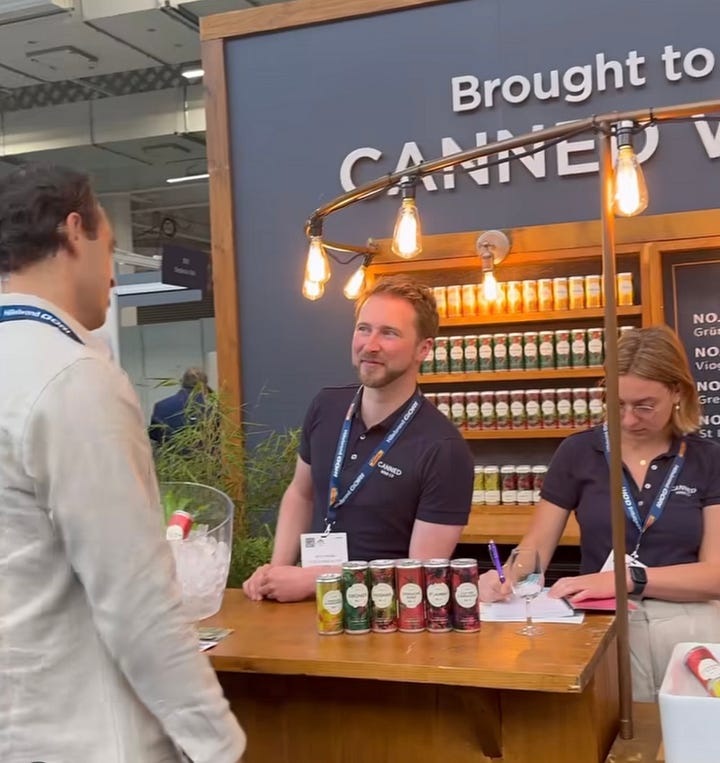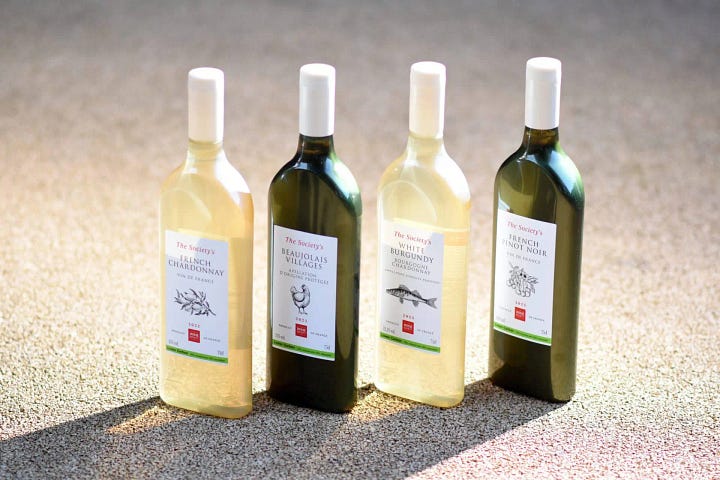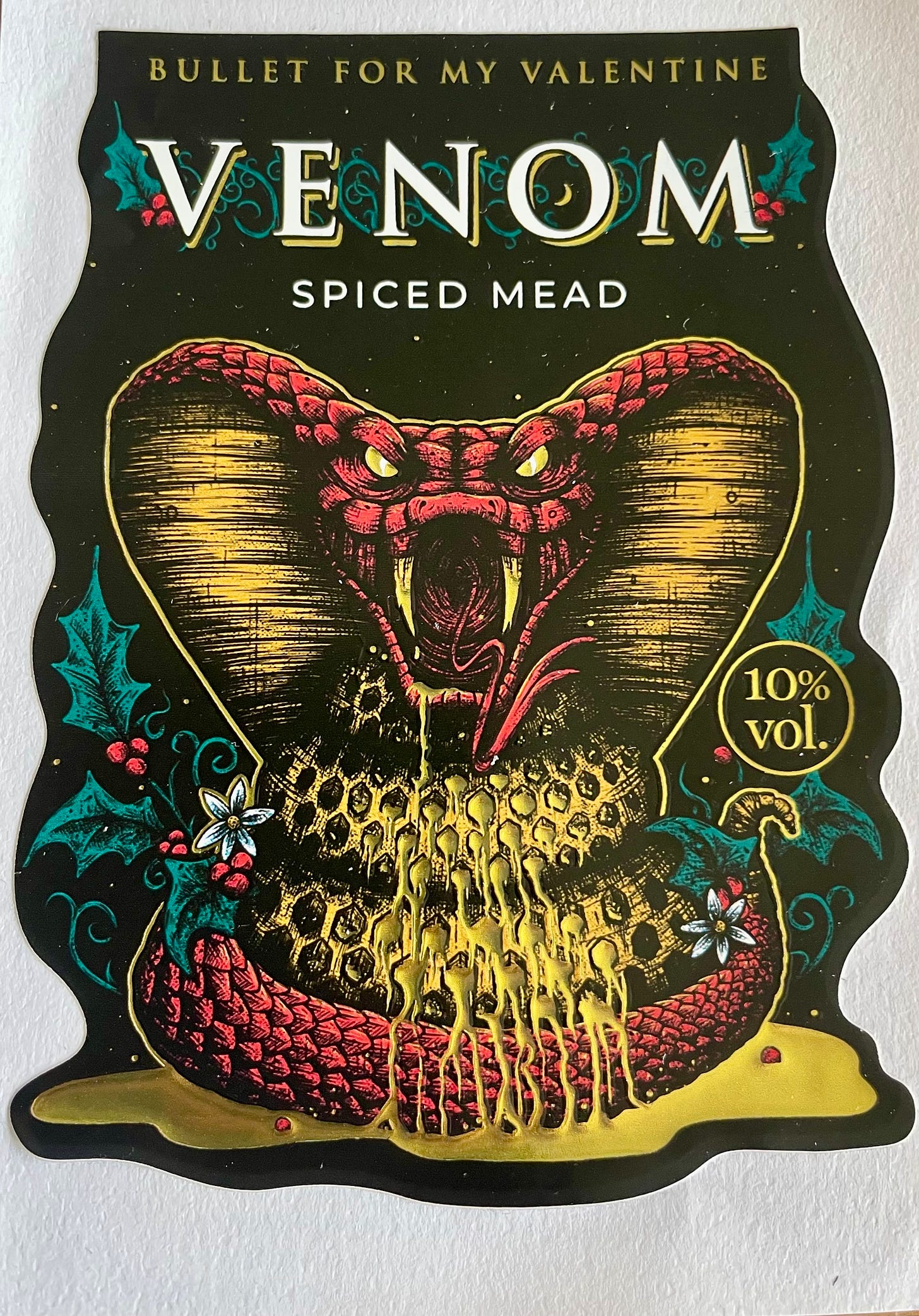Wine's perfect storm
Falling demand, trade wars and red tape cast an uncertain mood over this week's London Wine Fair. Can the wine trade survive? Plus: what I've been drinking this week




Gatherings of the UK wine trade often present an odd contrast between the industry’s doom-laden official predictions and the bonhomie of a load of old mates chattering over wine. So it was at this week’s London Wine Fair.
Wine and Spirit Trade Association (WSTA) CEO Miles Beale warned attendees that they would have to adapt to “seismic change” in the shape of Donald Trump’s trade wars and shocks from the UK government such as sweeping changes in tax and regulation. Meanwhile out on the floor, I was greeting PR contacts and tasting with producer friends, while a mate of mine reminisced with a fellow ex-Oddbins veteran about a particularly drunken office Christmas party in a Kensington bar (“I didn’t dare go back for years afterwards!”)
Nevertheless, it’s hard not to conclude just now that the UK wine industry is up against a perfect storm. In February, Rishi Sunak’s grotesquely complicated changes to alcohol duty finally took effect, a mocktail of red tape and tax rises that Wine Society CEO Steve Finlan has said will cost the Society up to £3.5 million (€4.16m/$4.7m) this year alone. Majestic CEO John Colley blamed the changes last month for the chain cutting some smaller lines: “If you’ve got something that just doesn’t make sense because the volumes are so small and the cost of admin, there’s an impact. You just can’t make any money from doing it.”
“The change in duty has been a huge thing – it’s so complicated and it has hit importers so hard,” says Wines of South Africa’s Jo Wehring. “It’s making the UK a less attractive market.”
Also in February, we saw the opening shots in Trump’s shotgun-to-foot trade wars, with threats of a 200 per cent tariff on European wine. In the event, the tariff was “only” 20 per cent, subsequently cut to 10 per cent. But that’s still plenty, the biggest US tariff hike in decades – and subject to review after 90 days, in July, on the whim of the man a US importer friend now refers to as “the orange shit gibbon”. The uncertainty is crippling for importers everywhere: as Wehring told me this week, “What’s happening in the US is scaring the life out of everyone.”
In the UK we have the lingering effects of the Covid 19 pandemic in changed consumption patterns. Meanwhile, even though inflation has now fallen to 3.5 per cent, drinkers have been buffeted by years of galloping price rises: there are few bottles under £40 (€47.50/$53) these days in most central London restaurants. Not many under £50 in lots of places, darling. And Brexit continues to be the self-destructive gift that keeps on taking.
The London Wine Fair itself has reflected some of those challenges in recent years. The first time I went, in 2006, it was held in the vast hangar of the Excel Centre in the wastelands of Canning Town. But it needed the space, since there were 1,300 exhibitors from 35 countries and around 25,000 visitors. This year there were fewer than a third that number of exhibitors, and no sign of most of the big importers or of the big national bodies that used to be regulars (Wines of Australia, Wines of Chile; at least Macedonia were there.) Last year it drew around 9,000 visitors. The contrast with this year’s market-leading Wine Paris fair, with ten times that number of exhibitors and nearly six times as many visitors, was stark. I’d estimate you could fit three entire London Olympia fairs inside just Hall 4 in Paris.
“Maybe it’s a metaphor for Britain itself,” mused one industry veteran, “small, a bit irrelevant but with some areas of great interest.”
In fairness to the London Wine Fair’s organisers, many of the challenges are international. For a start, wine producers in many parts of the world are starting to suffer from the effects of climate change. Vines have been called the canary in the coal mine for the climate emergency, with drought, fires, savage floods and hailstorms becoming steadily more common, taking a toll on this sensitive plant. Last month the International Organisation of Vine and Wine (OIV) announced that global wine production in 2024 fell to the lowest level since 1961: it said this was “largely due to unpredictable and extreme weather events… caused by climate change”.
Numbers of teetotallers are rising: if I get one more invite to a NoLo-alcohol drinks event, I might have to call in a kombucha strike.
The OIV also announced that wine consumption had fallen to a level not seen since the same year. Indeed since a US report early last year warned of falling consumption, especially among younger drinkers, the global wine industry has been in a perpetual near-frenzy over faltering sales and changing habits.
Earlier this year I chewed over evidence of young people’s boozing habits and came to slightly more cheerful conclusions. But put those trends together with others and we do have a problem. Numbers of teetotallers are gradually rising: if I get one more invite to a NoLo-alcohol drinks event, I might have to call in a kombucha strike. And we hear the increasingly shrill warnings of neo-prohibitionist extremists – one glass could land you on skid row (I paraphrase) – influencing national guidelines.
We did at least have good news on Monday this week in the shape of the UK’s new trade agreement with the EU. While the loosened controls on trade in live animals and fresh foods do not directly affect wine imports, they will hopefully speed up the whole logjammed customs process. To be clear: importers are still stuck with massively more red tape and higher costs than before 2021: Brexit remains a slap in the face for both businesses and consumers. But perhaps if Prime Minister Keir Starmer has finally found the courage to defy the Daily Mail on this, he may move further on re-integrating our economy with Europe in future.
This week’s deal is, however, unlikely to have any impact on wine prices. These have already come under further pressure from the Government’s increases this month in employers’ National Insurance contributions (payroll taxes) and the National Living Wage. The next challenge is the arrival of Extended Producer Responsibility (EPR) rules. While these have as yet made about as much impact on public consciousness as Seedlip slammers on a lads’ night out, the drinks industry has already got very cross.
EPR is intended to drive up recycling rates and encourage more sustainable packaging, by charging producers fees based on the weight of packaging they use. Starting last month, all small businesses with an annual turnover of more than £1 million (€1.19m/$1.34m) and importing or supplying more than 25 tonnes of packaging must report this tonnage to the government (larger firms face tougher controls.) Then, starting this October, they will have to pay fees based on the weight of their packaging, which will be passed on to local authorities collecting waste for recycling. The Government’s most recent “estimate” for the fees it will charge is not good news for the wine trade: glass will be charged at £240/tonne (€285/$320.) This will inevitably get passed on to consumers.
I do, however, see a ray of hope in EPR if it helps encourage more sustainable packaging. At the Wine Fair this week the Canned Wine Company were doing a roaring trade, with a big selection of wine in aluminium cans (perfect to take along to help you get through a NoLo forum or EPR briefing). It’s big brands, too: New Zealand’s Villa Maria have just launched their Sauvignon Blanc in a 200ml can. The sector is expanding fast: one study last year predicted that canned wine sales will grow globally by 17 per cent a year over the next decade.
At the Fair I also talked to Santiago Navarro, CEO and Founder of Packamama, who make wine bottles from rPET (recycled plastic drinks bottles). They’re partly flat, saving space in transit; weigh just 63 grammes, as against a 420g lightweight glass bottle; have around half the carbon emissions of a bottle; and are fully recyclable. They will only guarantee fresh wine for 18-24 months but in a country where 92 per cent of wine is consumed within 48 hours of purchase, I’m not sure how many people will fret over the limited cellaring potential. Packamama are now making 1.5 million bottles a year, and the Wine Society have adopted them for several best-selling wines such as The Society’s White Burgundy.
Plastics are not an ideal solution. But as Navarro points out, “this is plastic that’s in circulation – we’re not encouraging new oil extraction.” I’ve been struck again and again, while writing Rooted in Change: The Stories Behind Sustainable Wine with Jane Masters MW, how there just aren’t simple solutions to any product involving supply chains. As Nigel Greening, owner of New Zealand’s Felton Road, told me recently: “Almost every time you find something you think is sustainable, it generally isn’t. There’s no simple rulebook.”
I suspect most wine will continue to be bottled in glass for the foreseeable future. I also suspect that wine prices will continue to rise above inflation, with duty increases, EPR and trade wars all taking their toll. That, ultimately, is the biggest threat to wine consumption, as borne out by a couple of recent surveys: people are drinking less mainly because they can’t afford it. We shall just have to hope that Keir Starmer does better on economic growth than he has on wine, and that the trade can woo drinkers with eye-catching new offerings. Can of Macedonian pét-nat, anyone?
What I’ve been drinking this week
Delgado Zuleta “La Goya” manzanilla sherry – classic, crisp, fresh manzanilla with a trademark saline edge. I loved this at lunch last weekend in Tozino, a great little tapas bar under the railway arches at Maltby St market, South London (Ultracomida, Bush Vines, Direct Wine Shipments and elsewhere, from £7.95/375ml)
Proyecto Garnacha “La Garnacha Salvaje del Moncayo” 2022 – seriously good value Garnacha from the old vines that are such a feature of the Aragón vineyards in north-west Spain. There’s weight and sweet, red berry fruit here but plenty of appealing freshness and acidity too: Garnacha in the more modern Spanish style (Majestic, £10.50 or £10 when bought as part of a mixed six bottles.)
Rizzi Barbaresco 2020 – these days this counts as a good-value Barbaresco, and while it’s unflashy, it’s unmistakeably from this most elegant Piemonte expression of Nebbiolo. Fragrant, savoury, elegant, well-balanced and longish (Lay & Wheeler, Tannico, from £21.)





Ex-Oddbins "veterans"! I shall add Farrington, High Holborn, Old Street, Seven Dials, Notting Hill and Bayswater to my battle honours.
A kombucha strike must become the go to protest option for the armchair rebel.